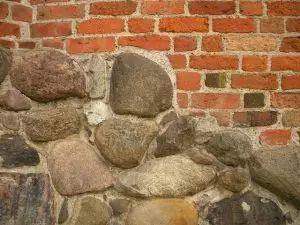Soil reinforcement is a critical process handled by Foundation Repair Specialists to strengthen unstable soil structures and prevent issues like settling and cracking. Techniques such as deep foundations, pile driving, and soil stabilization increase soil capacity and bearing strength, safeguarding buildings from environmental factors. These methods are crucial for addressing poor soil conditions, including expansive clays, loose sand, and rocky terrains, ensuring the longevity and structural integrity of structures. Foundation Repair Specialists use chemical stabilizers, mechanical reinforcement (like steel rods and mesh), geosynthetics (geotextiles, geogrids, geomembranes), and advanced materials like carbon fiber to reinforce weak soils effectively. Regular maintenance and site preparation are vital, and future advancements in technology like smart sensors and IoT will further enhance soil reinforcement practices.
Soil reinforcement is a critical practice in foundation repair, ensuring structural stability and longevity. This comprehensive guide explores various techniques to strengthen soil, addressing common challenges faced by specialists worldwide. From understanding the fundamentals of soil stabilization to examining modern geosynthetics, this article offers an in-depth look at methods employed by foundation repair specialists. Learn about mechanical, chemical, and innovative solutions, backed by real-world case studies, to discover best practices for long-lasting results in diverse soil conditions.
Understanding Soil Reinforcement: Why It's Essential for Foundation Stability

Soil reinforcement is a critical process that involves enhancing and strengthening the soil’s structural integrity to ensure the stability of foundations. This technique is especially vital for areas prone to unstable soil conditions, such as expansive clay or loose sandy soils. Understanding the importance of soil reinforcement is key to preventing common foundation issues like settling, cracking, and instability, which can lead to costly repairs.
Foundation repair specialists employ various techniques to reinforce soil, including deep foundations, pile driving, and soil stabilization methods. By increasing the capacity and bearing strength of the soil, these practices safeguard structures from environmental factors like excessive moisture, temperature changes, and seismic activity. Effective soil reinforcement not only extends the lifespan of buildings but also ensures the safety and structural integrity of homes and commercial properties in challenging geological settings.
Common Soil Conditions Requiring Reinforcement: Identifying the Challenges

Soil reinforcement is a critical aspect of foundation repair, often undertaken by specialists in the field. Common soil conditions requiring reinforcement include highly compressible or expansive clays, which can lead to significant settlement and cracking of structures. These soils, prevalent in many urban areas, pose unique challenges due to their tendency to swell or shrink with changes in moisture content. Such movements can cause severe damage to buildings over time.
Another common scenario is areas with poor soil quality, such as loose sand or rocky terrains. These conditions often result in uneven settling and instability, requiring specialized techniques to ensure structural integrity. Foundation repair specialists employ various reinforcement methods like deep foundations, soil stabilization, and pile driving to mitigate these challenges, ensuring buildings remain stable and safe for years to come.
Techniques for Soil Stabilization: A Comprehensive Overview

Soil stabilization is a critical aspect of foundation repair, and there are various techniques employed by specialists to reinforce and strengthen the soil beneath structures. One common method is the use of chemical stabilizers, which involve introducing specific chemicals to the soil to improve its bearing capacity. These additives react with the soil particles, increasing their strength and reducing settlement. Foundation repair specialists carefully select the appropriate stabilizer based on factors like soil type, structure weight, and environmental conditions.
Another powerful technique is mechanical soil reinforcement, where physical structures are used to enhance soil stability. This includes methods like pile driving, where vertical piles are driven into the ground to provide additional support, and geogrids or mesh reinforcements that are embedded in the soil to prevent settlement and movement. These techniques are particularly effective for structures built on loose or compressible soils, ensuring long-term stability and protecting against potential foundation failures.
Mechanical Reinforcement Methods: Enhancing Soil Bearing Capacity

Soil reinforcement techniques play a pivotal role in ensuring structural integrity, especially for areas prone to poor soil conditions or existing structures requiring additional support. Among various methods, mechanical reinforcement stands out as an effective way to enhance soil bearing capacity. This approach involves the strategic placement of hardware such as steel rods, mesh, and piles into the soil mass. Foundation repair specialists often employ these techniques to strengthen loose or unstable soils, thereby improving the foundation’s overall stability.
Mechanical reinforcement methods offer several advantages. Firstly, they can significantly increase the soil’s compressive strength, allowing it to support heavier loads without failure. This is particularly beneficial for construction projects that demand robust foundations. Secondly, these methods are versatile and adaptable, suitable for diverse soil types and site conditions. By enhancing soil bearing capacity, mechanical reinforcement ensures the longevity of structures built on weak or unstable ground, thus preventing costly repairs down the line.
Chemical Solutions: Injecting Strength into Weak Soils

Weak soils can pose significant challenges for construction and foundation repair specialists, but chemical solutions offer an effective reinforcement technique. By injecting specific chemicals into weak or unstable soil, engineers can dramatically improve its strength and bearing capacity. This process involves careful selection of chemicals tailored to the soil’s composition and the project’s unique requirements.
Foundation repair specialists use this method to stabilize slopes, prevent erosion, and enhance the overall integrity of the soil. The injected chemicals can include polymers, emulsions, or other compounds that increase soil cohesion, improve compaction, and resist water infiltration. This technique is particularly useful in areas with expansive clays or loose sand, where traditional reinforcement methods might not be as effective.
Geosynthetics in Soil Reinforcement: The Modern Approach

Geosynthetics, a modern innovation in soil reinforcement, offer an efficient and effective solution for foundation repair specialists. These synthetic materials, including geotextiles, geogrids, and geomembranes, have transformed the way we strengthen and stabilize soil. Geosynthetics provide exceptional strength-to-weight ratios, allowing for substantial load support while minimizing material usage. Their versatility makes them suitable for a wide range of applications, from slope stabilization to retaining wall construction, ensuring long-lasting structural integrity.
Foundation repair specialists benefit greatly from geosynthetics’ ability to enhance soil’s mechanical properties. By incorporating these materials into the soil structure, specialists can improve compaction, reduce settlement, and mitigate erosion. Geosynthetics also promote drainage, preventing water-related issues that often lead to foundation damage. With their durability and resistance to environmental factors, geosynthetics provide a reliable long-term solution, ensuring structures remain stable and secure for years to come.
Case Studies: Successful Soil Reinforcement Projects by Foundation Repair Specialists

Foundation repair specialists have successfully implemented various soil reinforcement techniques in numerous projects, showcasing remarkable results. One notable case study involves a historic building in a dense urban area. The structure was experiencing significant settlement due to weak soil conditions and high water table levels. Foundation repair specialists addressed this challenge by employing deep foundation modification techniques, including the installation of pile supports and soil stabilization measures. This project not only stabilized the building but also preserved its architectural integrity, demonstrating the expertise of these specialists in tackling complex soil-related issues.
Another successful example highlights a large-scale residential development where poor soil drainage led to frequent flooding and structural damage. Foundation repair specialists stepped in by designing and executing an innovative solution—a comprehensive soil reinforcement system that included geotechnical engineering principles. By enhancing soil bearing capacity and implementing effective drainage systems, they ensured the stability of the entire development. This project has set a benchmark for future endeavors, proving that strategic planning and specialized knowledge can transform challenging soil conditions into robust foundations.
Best Practices for Long-Lasting Soil Reinforcement: What Experts Recommend

When it comes to long-lasting soil reinforcement, experts in foundation repair emphasize several key practices. Firstly, proper site preparation is paramount. This involves assessing and addressing any existing soil issues like compaction or instability. Experts recommend thorough testing and analysis to understand the soil’s properties before implementing reinforcement methods.
Additionally, using appropriate materials and techniques is crucial. Geogrids, for instance, can enhance soil strength and flexibility, making them a popular choice among foundation repair specialists. Proper drainage systems should also be integrated to prevent water-related damage, as moisture can weaken reinforced soils over time. Regular maintenance checks are another recommended practice to ensure the longevity of soil reinforcement efforts.
Future Trends in Soil Reinforcement Technology

The future of soil reinforcement technology looks promising, with innovations driven by advancements in materials science and engineering. Foundation repair specialists are leveraging advanced composites, such as carbon fiber and polypropylene fabrics, that offer superior strength-to-weight ratios, making them ideal for reinforcing weak or unstable soils. These materials can be easily integrated into various soil reinforcement techniques, including deep foundation enhancement and slope stabilization.
Additionally, the integration of smart sensors and Internet of Things (IoT) technology is expected to transform soil reinforcement practices. These sensors can monitor real-time soil conditions, structural integrity, and environmental factors, enabling proactive maintenance and early detection of potential issues. This data-driven approach will empower foundation repair specialists to make informed decisions, optimize reinforcement strategies, and enhance the longevity and safety of structures built on challenging terrains.
